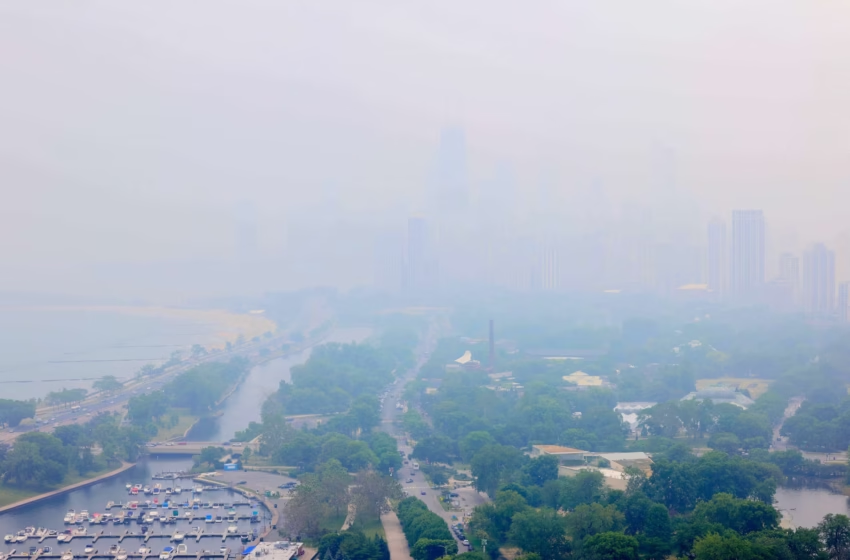Air quality alert: What Midwest residents should do to stay safe

Wildfire smoke worsens air quality across Midwest cities
Multiple states across the Midwest, including Iowa, Wisconsin, and Illinois, are currently experiencing hazardous air quality levels due to drifting smoke from ongoing Canadian wildfires. The thick haze has prompted official air quality alerts and public health warnings, urging residents to take precautions, especially those with respiratory conditions. On July 31, 2025, major cities such as Des Moines, Milwaukee, and Chicago recorded “very unhealthy” air quality index (AQI) ratings, with visibility significantly reduced and pollutant levels reaching dangerous highs.
What’s Causing the Bad Air Quality?
The current air pollution surge is linked to a renewed wave of wildfires burning across central and western Canada. As wind patterns push the dense smoke southward, parts of the U.S. Midwest have found themselves under a blanket of fine particulate matter, also known as PM2.5. PM2.5 particles are especially dangerous because they are small enough to penetrate deep into the lungs and enter the bloodstream, potentially causing respiratory irritation, heart issues, and other health complications.
Current Air Quality Index (AQI) Levels
According to the latest reports:
- Des Moines, Iowa recorded AQI levels in the 180s, considered “unhealthy”
- Milwaukee and Madison, Wisconsin reached “very unhealthy” readings, with AQI levels exceeding 200
- Chicago issued a citywide Air Quality Alert, as smoke thickened overnight and visibility dropped sharply
Health officials recommend that residents stay indoors where possible, use air purifiers, and avoid strenuous outdoor activity until conditions improve.
Who Is Most at Risk?
The poor air quality poses the greatest risk to:
- Children and elderly individuals
- People with asthma, COPD, or other respiratory conditions
- Outdoor workers and athletes
- Pregnant women and those with cardiovascular issues
Experts emphasise the need for vulnerable groups to wear N95 masks if going outside is unavoidable and to monitor local AQI updates closely.
Local Response and Safety Measures
Local governments and health departments across affected states have issued advisories and alerts through weather services, urging residents to limit outdoor exposure. In Chicago, public schools and sports leagues have postponed outdoor activities. Wisconsin’s Department of Natural Resources issued an official Air Quality Advisory through Thursday evening. Air quality is expected to remain unstable over the next 48 hours as wind conditions continue to shift. The Environmental Protection Agency (EPA) and state-level environmental agencies are monitoring the situation closely and updating forecasts regularly.
READ ALSO
Celsius Energy Drinks recalled for alcohol contamination: What consumers should know
How Long Will the Smoke Last?
Meteorologists forecast that some relief could arrive by the weekend if expected rain and wind patterns help clear the skies. However, as wildfire activity in Canada remains active, intermittent episodes of smoke intrusion could continue throughout the coming weeks. Residents are advised to check the AirNow.gov website or local health department updates to stay informed about current AQI conditions.
A Call For Safety
The ongoing air quality crisis highlights the far-reaching impact of wildfires beyond national borders. As smoke from Canada continues to affect millions in the U.S. Midwest, taking proper health precautions and staying informed remain essential. Cities like Des Moines, Milwaukee, and Chicago are on high alert, and residents are urged to act accordingly until the skies clear once again.

